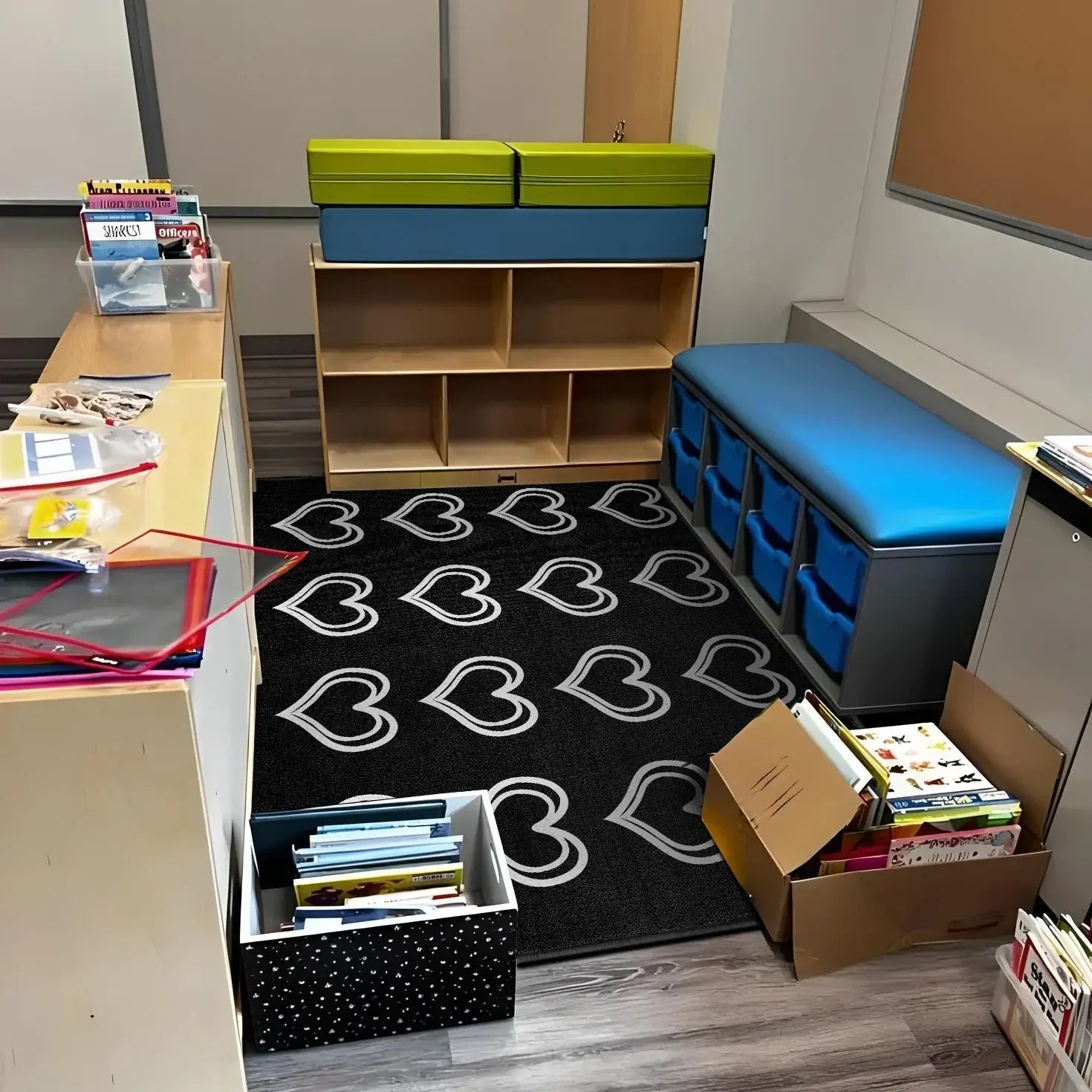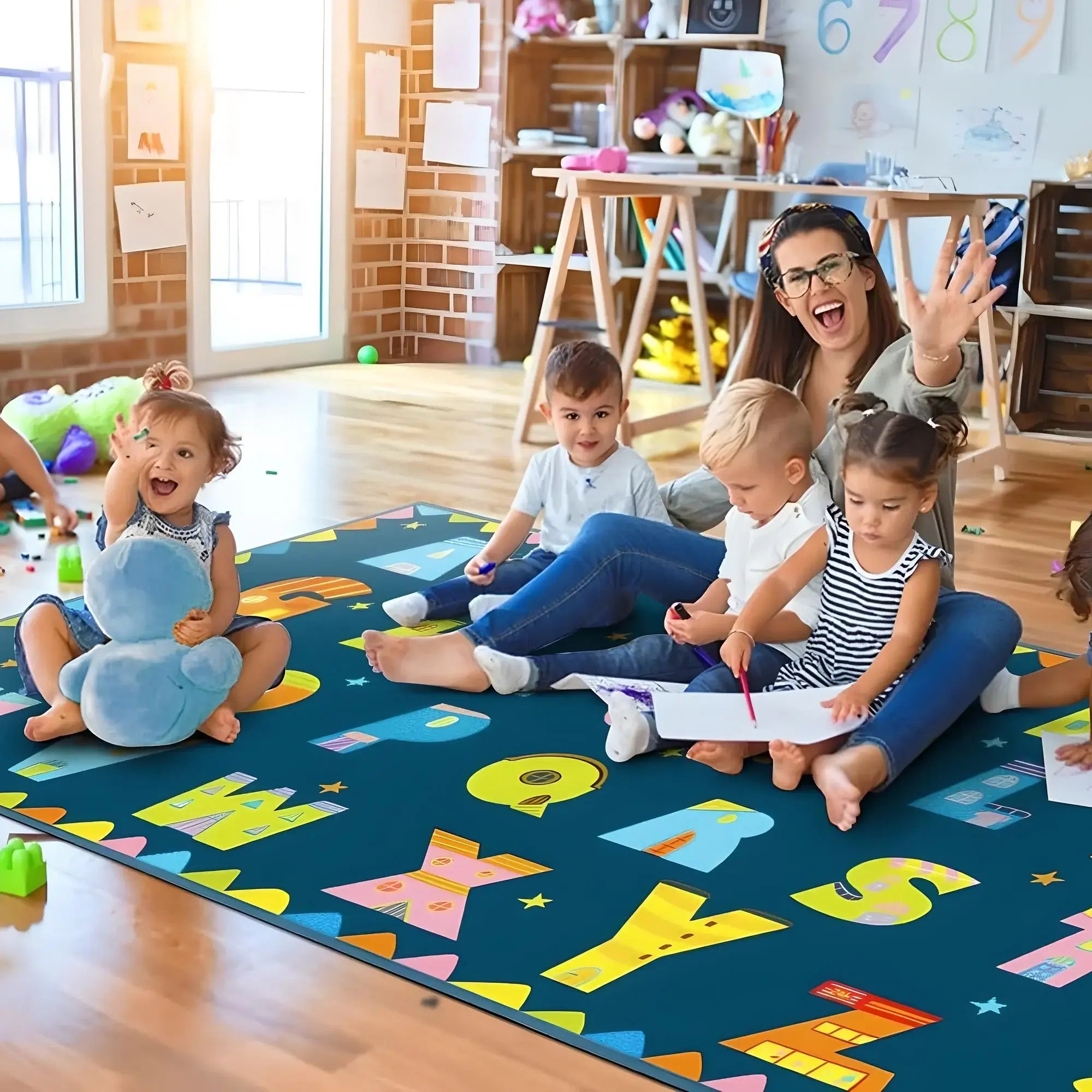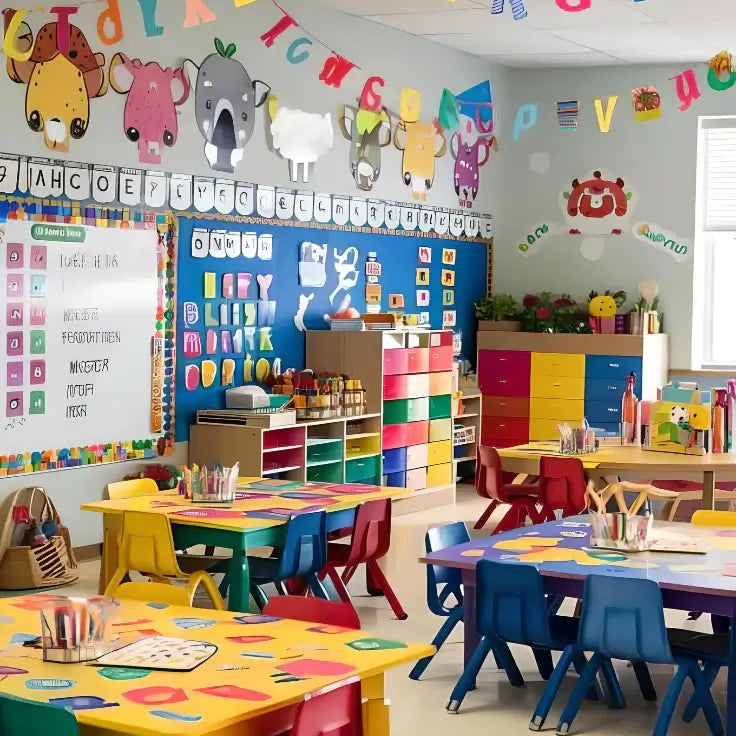Why Classroom Rugs Are Essential Learning Tools
Classroom rugs aren't just decorative elements – they're powerful educational tools that can enhance the learning experience in numerous ways.
Research from educational psychology studies shows that comfortable, well-defined spaces can significantly improve student focus and engagement.
Benefits of Classroom Rugs:
- Create designated learning zones for different activities
- Provide comfortable seating for circle time and reading sessions
- Reduce noise levels and improve classroom acoustics
- Add visual interest and warmth to sterile classroom environments
- Help with classroom management by defining boundaries
Types of Classroom Rugs for Different Learning Needs
Educational Rugs
These rugs incorporate learning elements directly into their design, making them perfect for interactive lessons. Popular options include:
- Alphabet rugs for early literacy development
- Number and math rugs for hands-on mathematics instruction
- World map rugs for geography lessons
- Reading corner rugs with book-themed designs
Activity-Specific Rugs
Different classroom activities require different rug characteristics:
Circle Time Rugs: Look for rugs with clear seating spots or borders that help children understand where to sit during group discussions.
Quiet Reading Rugs: Soft, plush textures create cozy reading nooks that encourage independent reading time.
STEM Activity Rugs: Durable, easy-to-clean surfaces that can withstand experiments and hands-on learning activities.
Material Matters: Choosing Durable Classroom Rugs
The material of your classroom rug directly impacts its longevity, safety, and maintenance requirements.
According to Consumer Reports' flooring guides, certain materials perform better in high-traffic educational environments.
Top Material Options:
Nylon: Extremely durable and stain-resistant, perfect for busy classrooms. Easy to clean and maintains appearance over time.
Polypropylene: Budget-friendly option that resists moisture and stains. Ideal for art classrooms or spaces where spills are common.
Natural Fibers: Wool and cotton provide comfort but require more maintenance. Best suited for low-traffic reading areas.
Recycled Materials: Eco-friendly options made from recycled plastic bottles combine sustainability with durability.
Size and Placement Strategies
Proper rug sizing can make or break your classroom layout. Consider these guidelines when selecting and placing your classroom rugs:
Sizing Guidelines:
- Small rugs (4x6 feet): Perfect for reading corners or small group activities
- Medium rugs (6x9 feet): Ideal for circle time with 15-20 students
- Large rugs (8x10 feet or larger): Suitable for whole-class gatherings or multiple activity zones
Strategic Placement Tips:
Position rugs away from high-traffic doorways to minimize wear and ensure they define specific learning areas rather than becoming walkways.
For comprehensive classroom organization ideas, explore our classroom setup guides.
Safety Considerations and Standards
Classroom safety should always be the top priority when selecting rugs. The National Fire Protection Association provides guidelines for classroom materials that help ensure student safety.
Key Safety Features:
- Fire-resistant treatments: Look for rugs that meet or exceed safety standards
- Non-slip backing: Prevents accidents from sliding rugs
- Low pile height: Reduces tripping hazards while remaining comfortable
- Non-toxic materials: Essential for younger students who may have closer contact with floor surfaces
- Rounded corners: Minimizes injury risks in active classroom environments
Maintenance and Cleaning Best Practices
Proper maintenance extends rug life and maintains a healthy classroom environment. Regular cleaning prevents the buildup of allergens, dirt, and bacteria that can affect student health and rug appearance.
Daily Maintenance:
- Vacuum high-traffic areas daily
- Address spills immediately to prevent staining
- Rotate rug positioning periodically to ensure even wear
Deep Cleaning Schedule:
- Professional cleaning every 6-12 months depending on usage
- Spot clean stains weekly using appropriate cleaning solutions
According to Good Housekeeping's cleaning experts, regular maintenance can extend rug life by up to 50%.
Budget-Friendly Options and Investment Strategies
Classroom rugs represent a significant investment, but strategic purchasing can maximize value while staying within budget constraints.
Cost-Effective Strategies:
- Bulk purchasing: Many suppliers offer discounts for multiple rug orders
- Seasonal sales: Back-to-school periods often feature educator discounts
- Grant opportunities: Many educational grants cover classroom improvement supplies
- Phased replacement: Replace rugs gradually rather than all at once
Quality vs. Price Balance:
While budget constraints are real, investing in higher-quality rugs often proves more economical long-term.
A durable rug lasting 5-7 years costs less per year than replacing cheaper options annually.
Creating Themed Learning Environments
Classroom rugs can serve as the foundation for themed learning environments that capture student imagination and enhance curriculum connections.
Popular Theme Ideas:
- Ocean themes: Perfect for marine biology units or reading adventures
- Space exploration: Ideal for STEM classrooms and astronomy lessons
- Community helpers: Great for social studies and career exploration
- Seasonal themes: Flexible options that can change throughout the year
For more themed classroom ideas, check out our educational environment design tips.
Technology Integration and Modern Classroom Rugs
Modern classroom rugs increasingly incorporate technology-friendly features that support 21st-century learning environments.
Tech-Enhanced Features:
- Conductive materials: Allow for safe use of electronic devices
- Interactive elements: Some rugs include QR codes or augmented reality features
- Cable management: Built-in channels for safely routing electrical cords
- Device-friendly surfaces: Materials that won't interfere with tablets or laptops
Special Needs Considerations
Inclusive classroom design requires considering the needs of all students, including those with disabilities or sensory processing differences.
Accessibility Features:
- High contrast designs: Help students with visual impairments navigate spaces
- Texture variations: Provide sensory input for students who benefit from tactile stimulation
- Clear boundaries: Distinct edges help students with autism spectrum disorders understand space definitions
- Allergen-free materials: Essential for students with environmental sensitivities
The Americans with Disabilities Act provides guidelines for creating accessible educational environments that can inform rug selection decisions.
Seasonal Rotation and Storage Solutions
Implementing a seasonal rug rotation system can keep classrooms fresh and aligned with curriculum themes throughout the year.
Rotation Benefits:
- Extends individual rug lifespan by reducing continuous wear
- Maintains student interest through environmental changes
- Allows for curriculum-specific designs during relevant units
- Provides backup options when rugs require deep cleaning
Storage Solutions:
Proper storage prevents damage during off-seasons. Roll rugs rather than folding to prevent creases, and store in climate-controlled environments when possible.
Environmental Impact and Sustainability
Sustainable classroom choices benefit both the environment and long-term budgets. Many manufacturers now offer eco-friendly options that don't compromise on quality or durability.
Sustainable Options:
- Recycled content rugs: Made from post-consumer materials
- Natural fiber options: Biodegradable at end of life
- Local manufacturing: Reduces transportation environmental impact
- Longevity focus: Durable rugs reduce replacement frequency
For comprehensive information about creating environmentally responsible classrooms, visit our green classroom initiatives section.
Conclusion: Investing in Student Success Through Thoughtful Design
Classroom rugs represent more than floor coverings – they're investments in student comfort, engagement, and learning success.
By carefully considering factors like material durability, safety standards, maintenance requirements, and educational value, educators can select rugs that enhance their learning environments for years to come.
The right classroom rug creates a foundation for memorable learning experiences, from cozy reading sessions to interactive group activities.
When combined with proper maintenance using resources like our Green Classroom Cleaning Guide, these valuable classroom tools will continue supporting student success throughout their lifespan.
Remember that the best classroom rug is one that meets your specific needs, fits your budget, and aligns with your educational goals.
Take time to evaluate your space, consider your students' needs, and choose rugs that will grow with your classroom community throughout the academic year and beyond.




Leave a comment
This site is protected by hCaptcha and the hCaptcha Privacy Policy and Terms of Service apply.